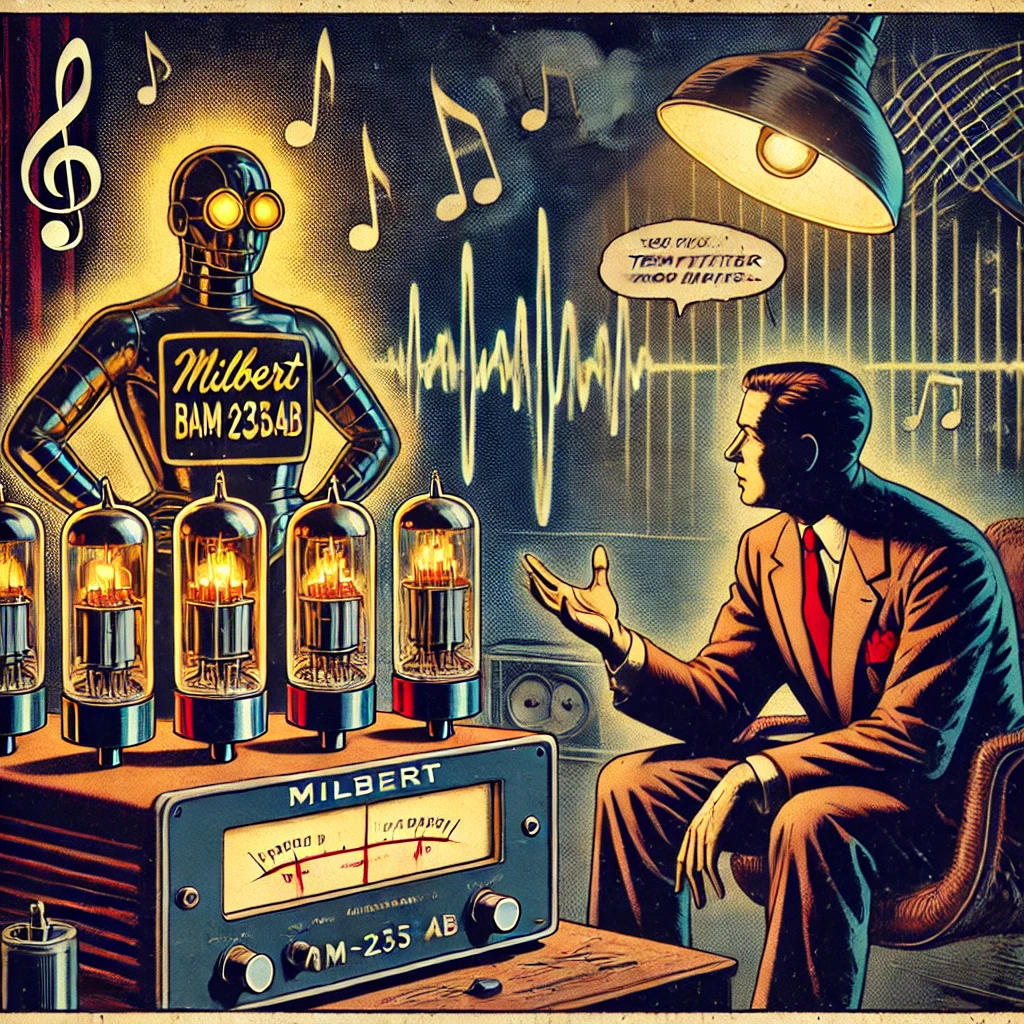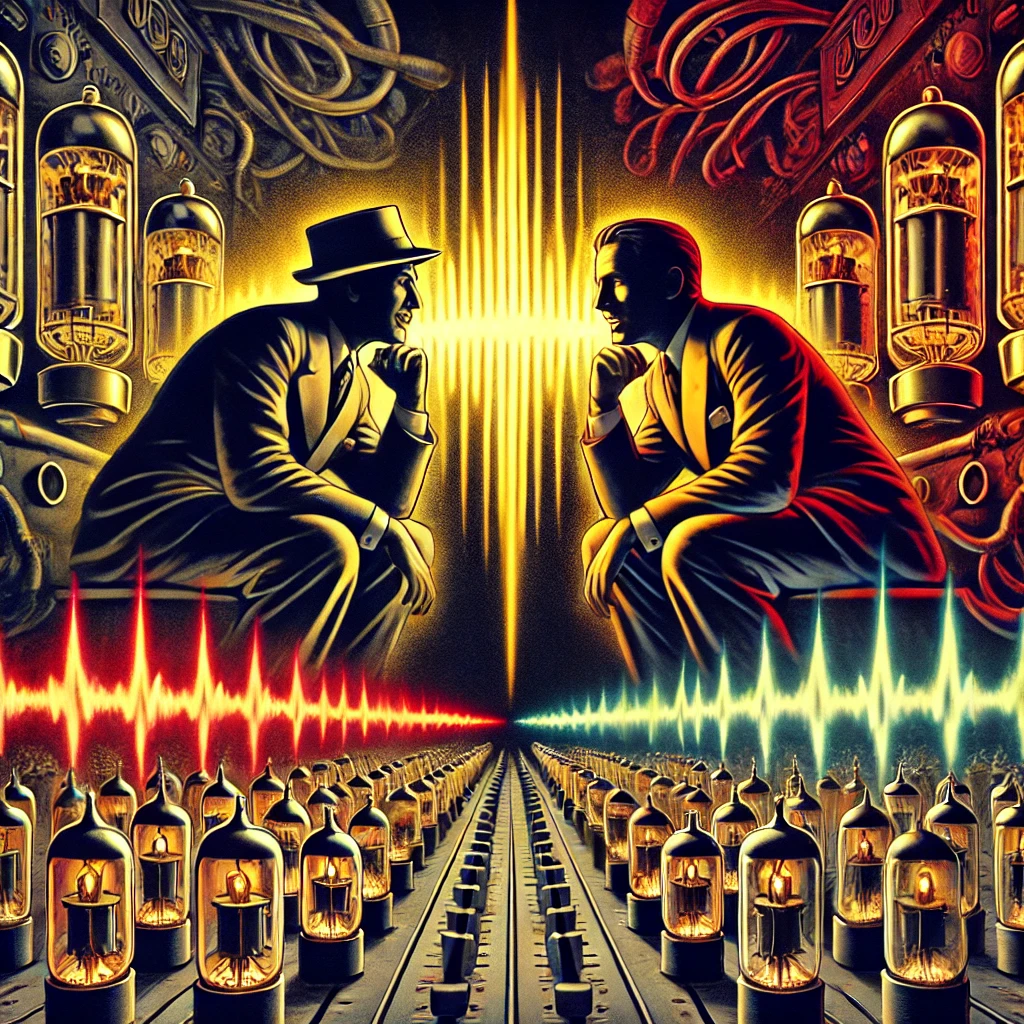Tubes vs Transistors – Perception of Loudness, Clarity, Distortion, Sound Quality
In general, with other variables held steady, as the power rating goes up dramatically (10x), the perception of loudness only doubles. 3,000 Watts sounds only “four-times louder” than 30 Watts. It seems unlikely, but measurements and anecdotal evidence have consistently shown it is generally true.

People often ask, how does the Milbert BaM-235ab compare, in terms of sound quality and loudness, to a transistor amp? It’s a simple question that uncovers many complexities. One answer is it’s so subjective, because the character of amplification and overload sound different; therefore, it comes down to approximation and personal preference. Please keep in mind we are necessarily speaking in broad, general terms.
In general, tubes overload softer and don’t hard-clip like transistors overdriven – giving more ‘cushion’ and ‘headroom’ before distortion becomes objectionable. Also, the overdriven spectra of a tube amp sounds different: softer, more full, not as harsh. So, when pushed hard, transistor amp distortion generally sounds much nastier than tube amp distortion. Guitarists (who often seek “good sounding” distortion using tube amps) have solidly demonstrated this for many decades, which is why we make GAGA.
http://milbert.com/articles/tubes_vs_transistors_perception

The debate between tubes (vacuum tubes) and transistors (solid-state electronics) has been ongoing in the audio community for decades, with enthusiasts and professionals alike weighing the pros and cons of each technology. Here’s a comparison of how tubes and transistors are perceived in terms of loudness, clarity, distortion, and overall sound quality:
1. Loudness: Tubes are often associated with a warmer, more “musical” sound that some listeners perceive as louder or more impactful, particularly in the midrange frequencies. This characteristic is often attributed to the way tubes handle harmonic distortion, which can add richness and depth to the sound without necessarily increasing the measured volume level. Transistors, on the other hand, are known for their ability to deliver clean, high-fidelity sound reproduction, but some argue that they may sound less “alive” or dynamic compared to tubes, especially when pushed to higher volume levels.
2. Clarity: Transistors are generally praised for their transparency and accuracy in reproducing audio signals, leading to perceived clarity and detail in the sound. They have low levels of harmonic distortion and noise, which can result in a more precise and analytical sound quality. Tubes, while capable of producing a rich and engaging sound, may introduce subtle colorations or distortions that some listeners find euphonic but others may perceive as masking fine details in the music.
3. Distortion: Both tubes and transistors can introduce distortion to audio signals, but they do so in different ways. Tubes are known for their characteristic “soft clipping” behavior, where they produce even-order harmonic distortion that can enhance the perceived warmth and depth of the sound. Some listeners prefer this type of distortion, particularly in the context of electric guitar amplifiers or vintage audio equipment. Transistors, on the other hand, tend to produce “harder” clipping and odd-order harmonic distortion, which may be perceived as less natural or pleasing to some ears, especially at high volumes.
4. Sound Quality: Ultimately, the perception of sound quality is subjective and can vary greatly from person to person. Some audiophiles prefer the “euphonic” colorations and harmonic distortions introduced by tubes, appreciating the vintage or “analog” character they impart to the sound. Others prefer the “clean” and accurate reproduction offered by transistors, valuing the fidelity and precision they provide. Both technologies have their strengths and weaknesses, and the choice between tubes and transistors often comes down to personal preference, system synergy, and the specific sonic characteristics desired by the listener.
In summary, tubes and transistors offer different sonic signatures and listening experiences, with tubes often associated with warmth, richness, and euphonic distortion, while transistors are prized for their clarity, accuracy, and fidelity. Ultimately, the best technology for a particular application depends on the listener’s preferences, the characteristics of the audio system, and the desired sonic outcome.